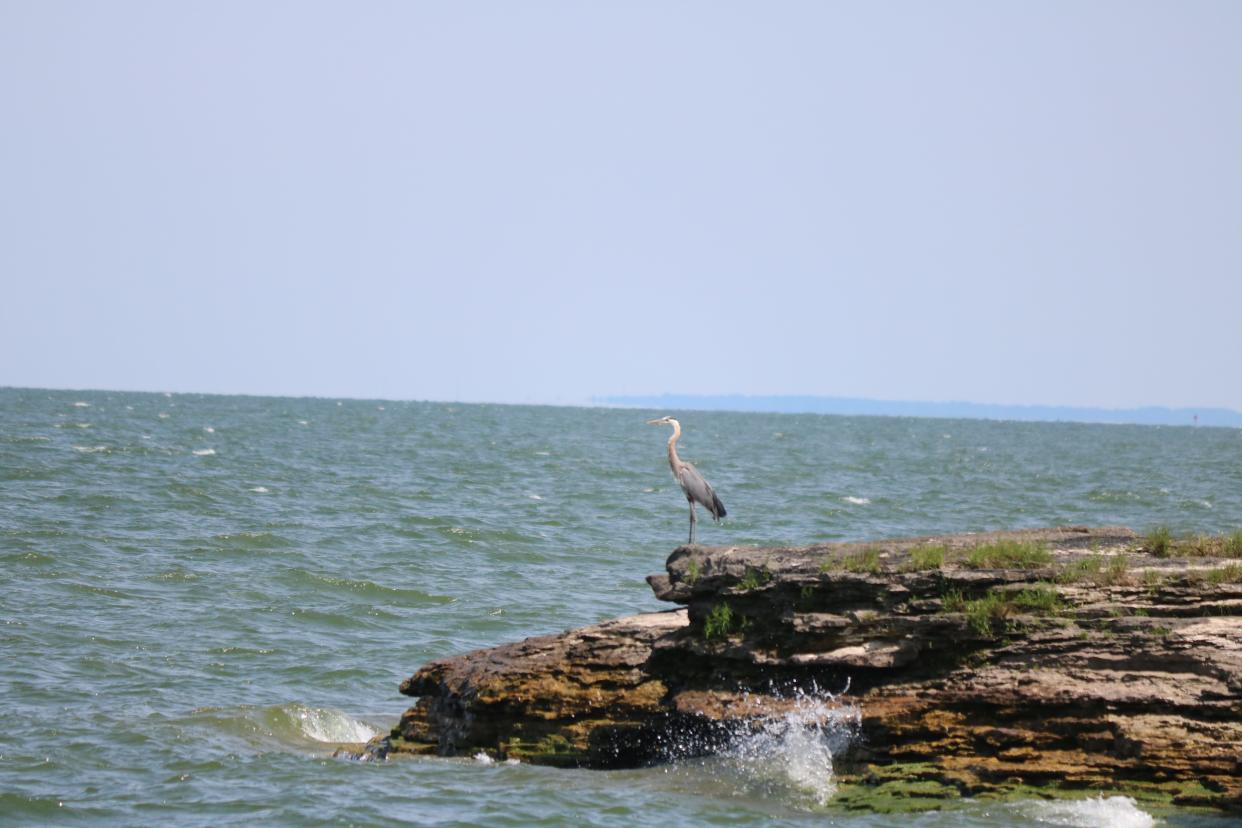Along the Way: Fighting Lake Erie pollution and winning

When the battle to rehabilitate and protect the environment feels so challenging that crushing defeat seems close by, listening to Kyle Dreyfuss-Wells restores hope that we humans can turn things around and make them better.
That is the message I took away from the recent Edith Chase Symposium where Dreyfuss-Wells was the featured speaker. The chief executive officer of the Northeast Ohio Regional Sewer District, Dreyfuss-Wells holds master’s degrees with honors in public affairs and environmental science and oversees the management of sanitary and storm water services to Cleveland and 61 other municipalities within a four-county area, a zone of 355 square miles.

Along the Way: Kent artist’s illustration to appear on new space telescope postage stamp
Along the Way: Honoring those who make Portage greener, healthier, safer
Speaking in Cene Lecture Hall in Kent State University’s College of Architecture and Environmental Science, Dreyfuss-Wells described her mission of reducing the 4.5 billion gallons of raw sewage that her district currently discharges into Lake Erie and other local waterways to fewer than 500 million gallons by 2036. Getting control over combined sewer overflows, the term used to describe sewage and storm water that can overwhelm waste water treatment plants, is key, she told her audience.
Creating large underground storage tunnels where combined sewage — a mixture of sanitary sewage and excess storm runoff — can be stored and then channeled into wastewater treatment plants, when they are not at capacity, is the method the Northeast Ohio Regional Sewer District is employing, Dreyfuss-Wells said.

Her presentation showed plans to create seven such tunnels reaching depths of more than 200 feet using tunnel boring machines capable of boring through soil and even hard rock. The machines, which can cost $15 million or more, use a gripper system that pushes forward as the boring through hard rock occurs.
Dreyfuss-Wells said the district has seven tunnels planned, each ranging from two to nearly four miles long. Equipped with powerful pumping stations, they will convey the combined sewages to wastewater treatment plants when they have excess capacity. Once treated the cleaned water can be released into Lake Erie, the source of drinking water for many of the millions who reside in Northeast Ohio.
Fees to home owners, businesses and industries are paying for the project and currently fees are projected to rise at an annual rate of 4.3 percent. The public is supporting the program, she said, because the consequences of not doing so are a contaminated Lake Erie in which aquatic life cannot be sustained and the water is unfit to drink. The district, according to figures Dreyfuss-Wells displayed, has operating expenses of $170 million and a capital budget of $270 million.
Along the Way: Greenery, bike trail highlights in Aurora Mayor Ann Womer Benjamin’s report
Along the Way: The musical legacy of Germaine Williams
In addition to its 62-member communities, the Northeast Ohio Sewer District offers services to communities not part of the district. Dreyfuss-Wells at the conclusion of her lecture recognized representative of three troops of Girl Scouts for their participation in Edith Chase Symposium.
The Edith Chase Symposium is named for the longtime Kent resident whose work in hydrology has been recognized by the U.S. National Oceanic and Atmospheric Administration. For years, Chase chaired the Coastal Resources Advisory Council for the Ohio Department of Natural Resources. She also served as Franklin Township zoning inspector. She died in 2017. The Kent Environmental Council, of which she was a charter member, and the Kent League of Women Voters started the symposium following Chase’s departure from Kent to live near her daughter during her final years. The symposium is now supported by numerous individuals and businesses. Retired Kent State Molecular Biologist Bob Heath is the symposium’s current president.
Life of Richard Bauer celebrated
Elsewhere, the life of former Kent resident Richard Bauer was celebrated last week by Pat Bauer and their children and friends at his Standing Rock Cemetery gravesite in a service conducted by Deacon Tim DeFrange of University Newman Center. A chemist who obtained his doctorate at the University of Akron’s Polymer Institute, Bauer’s career was mostly within the rubber industry and during his years at Goodyear, he received 39 U.S. patents.
The Bauers left Kent to retire in Canton, Georgia outside of Atlanta in 2002. His wife, Pat, and I grew up on Crain Avenue in the 1940s and early 1950s. She met her husband when they were both enrolled in Kent State University High School. Pat was a stalwart with the Red Cross and taught swimming to countless youngers in the area. In retirement she and her husband traveled often and made numerous trips to Australia and New Zealand.
David E. Dix is a former publisher of the Record-Courier.
This article originally appeared on Record-Courier: Along the Way: Fighting Lake Erie pollution and winning

